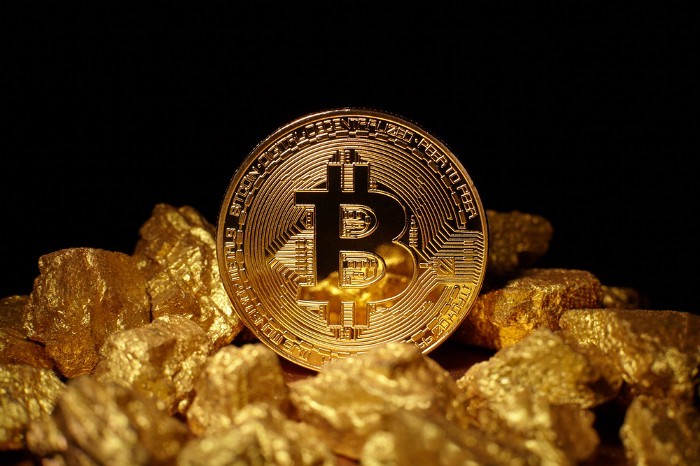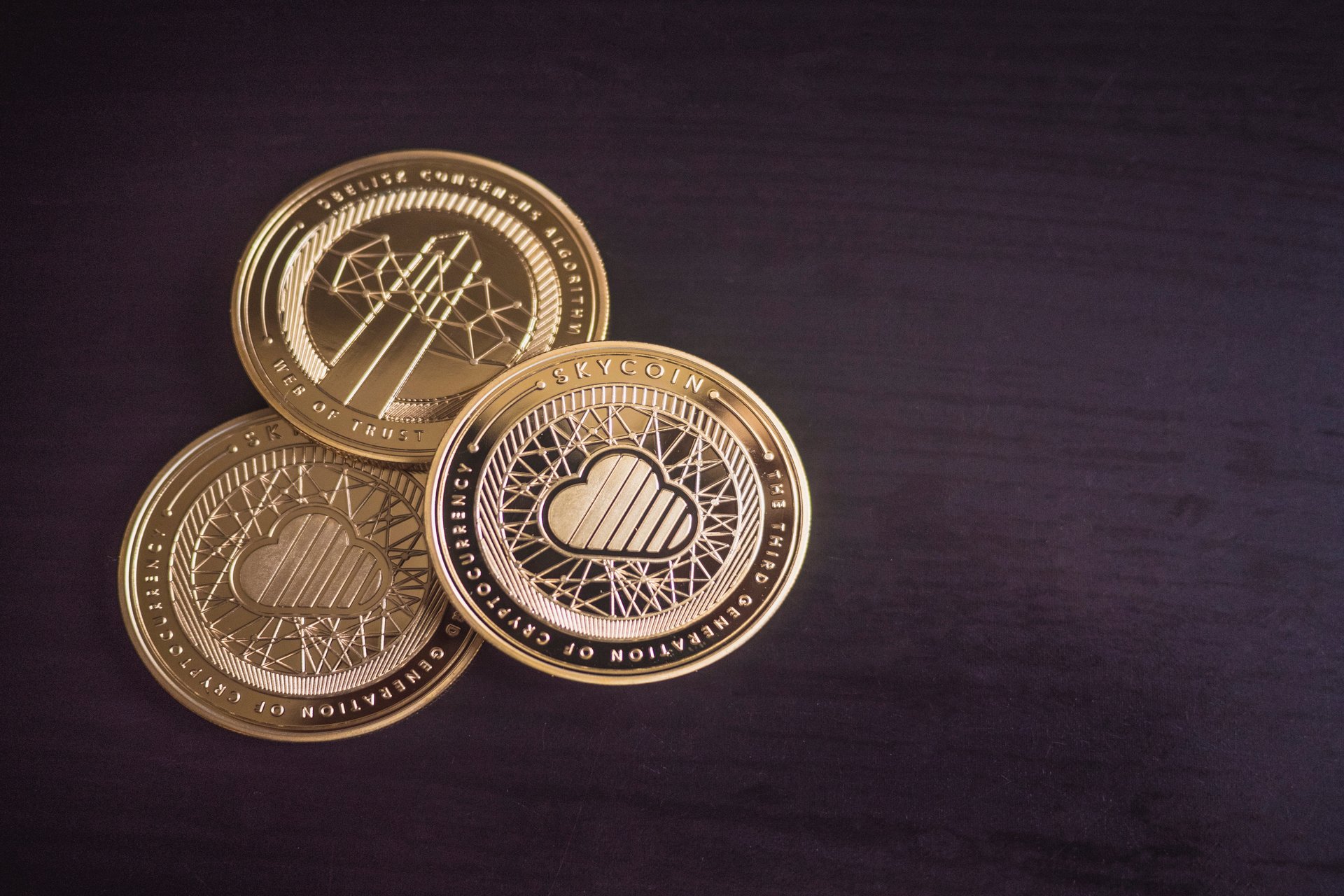Appended to the Bitcoin genesis block, which we celebrated the 10th anniversary of just two days ago was a cryptic message from Bitcoin’s creator Satoshi Nakamoto,
“03/Jan/2009 Chancellor on brink of second bailout for banks.”
Today, a debt tsunami, the likes of which the world has never experienced before lies on the horizon, but it’s not from banks alone, it encompasses the entire gamut of borrowers. From student loan debt to government bonds, the world has binged on borrowing. Investors, buoyed by access to easy credit have also sought to purchase increasingly more exotic debt instruments in search of yield. The product of this debt chase has risen to a US$250 trillion debt tsunami — a level which the world has never experienced before and three times what it was two decades ago. And this time, the biggest debtors are also the world’s biggest economies. According to Citigroup analysis of data from the Institute of International Finance, the biggest borrowers include the United States, China, the Eurozone and Japan, which collectively carry more than two-thirds of the world’s household debt, three-quarters of corporate debt and nearly 80% of government debt.

How We Got Here
Debt, in and of itself is not necessarily an economic evil. If nothing else, growing debt is the handmaiden of growing economies. For every borrower, there is a lender for whom a loan or bond is booked as an asset on their balance sheets. But it is this interwoven relationship between borrowers and lenders that is the biggest cause of worry. As the global economy slows and interest rates slowly creep up, borrowers may begin to default on their debt, which could lead to write-downs by holders of such debt and there are large pools of untested borrowing, from distressed asset funds to distressed debt funds which sprouted after the last financial crisis. From China’s shadow banking industry, with large pools of off balance sheet debt to emerging market borrowing, there are large pools of borrowing that have yet to be stress-tested, regardless of the actuarial models one uses. And with central banks starting to reign in easy-money policies, these pools of borrowing are about to get their first real-world stress test.
Faced with the double whammy of glacial growth and rising rates, the specter of another debt crisis looms and with oil prices continuing to languish, hopes for continued growth seem dim at best. Because the financial crisis was birthed in the credit markets, investors and economists have monitored the growth of debt with a keen eye. Debt is a double-edged sword — it can spur growth, providing the fuel that business and governments need for investment and infrastructure, but excessive debt, particularly where it is poured into vanity projects or unnecessary infrastructure spending can put a drag on economies and can limit the policy tools available to governments and central banks to respond to downturns. There is also growing evidence that the debt incurred since the financial crisis has not been put to the most optimal use. From corporate share buy-backs to debt-fueled shopping sprees on the part of consumers, to large-scale white elephant infrastructure projects in China, there is growing concern by both investors and economists that borrowing is not fueling investment in research and development or capital growth. To make matters worse, government debt has grown precipitously in the aftermath of the private-sector borrowing that precipitated the last financial crisis. And it was government debt that ultimately provided the means to power through the aftermath of the last financial crisis as the lender of last resort — but when the chickens finally come home to roost, who will bailout the bailors? There are some analysts who believe that the governments of developed economies have limitless largess with which to expand their debt loads. Guy LeBas, chief fixed-income strategist at Janney Montgomery Scott suggests,
“If nothing else, the 2018 U.S. budget deficit teaches us that developed economies have a lot more room to issue debt without significant consequences.”
The quote is interesting, because it mirrors one made by one-time Scottish financier (and convicted murderer) John Law, who created the world’s first stock market bubble and laid the foundation for the French Revolution, who once famously said,
“I maintain, that an absolute prince who knows how to govern can extend his credit further and find needed funds at a lower interest rate than a prince who is limited in his authority.”
“In credit as in military and legislative authorities, supreme power must reside in only one person.”

The assumption that rich countries can continue to borrow without consequence precipitated one of the most dramatic and violent political upheavals in 18th century France. And it’s not just sovereigns who have continued to borrow, businesses have as well. In the United States, ultra low interest rates have driven a business borrowing binge to 46% of U.S. GDP, based on federal statistics. And while the Trump administration’s tax cuts have boosted business bottom lines recently, there are growing signs that that one-time stimulus is starting to lose steam. The growth of corporate debt relative to earnings has led to a vast downgrade of a variety of corporate bonds to the very lowest levels of the investment grade range, meaning that any sudden shocks to the wider economy could cause widespread downgrades and the painful write-downs consequent to such downgrades.
Emerging Markets or Emerging Crises?
Then there’s the issue of emerging-market debt. In search of greater yield, investors poured into emerging-markets to fund their growth and development. China stands out as one of the biggest binge-borrowers, to fuel infrastructure projects and cities rising out of the desert. This year alone, emerging economies will need to either pay down or restructure nearly US$2 trillion of debt and with tightening monetary policy in the U.S. and other advanced economies, the rise in the dollar, emerging markets will find that debt far more expensive very soon.
The world as a whole is now moving into uncharted territory in that it has not experienced a prolonged zero-rate environment before, nor has it ever had to navigate out of one.

But the impact this will have on the nascent cryptocurrency sector is as yet uncertain. In 2008, the Bitcoin whitepaper was just fresh off the financial crisis and just fresh off the Satoshi Nakamoto’s keyboard. Few had heard of it outside the cypherpunk movement and the Bitcoin genesis block would not yet be mined until January 3, 2009. In countries like Venezuela and Zimbabwe, we’ve seen how Bitcoin helped to supplement or in some cases replace currencies which experienced hyperinflation. Observers have long stated that rich countries like the United States have had no use for cryptocurrencies, given the strength and stability of the dollar and U.S. institutions — the last two years of the Trump administration have challenged that assumption. But will a global debt crisis, send demand for Bitcoin and other cryptocurrencies soaring?
Cryptocurrencies as a Safe Haven?
As much as I would love to provide a straightforward answer, the complexity of the matter means that one is not forthcoming. In the period from 2016 running up to early 2018, the Trump administration, with its promise of tax cuts and looser regulation for a variety of industries buoyed stock markets from New York to Hong Kong and everything in between. Some of that frothiness naturally spilled over from the stock markets over into the next big speculative bet — the flavor at the time was initial coin offerings (ICOs) which rose in a fashion reminiscent of the dotcom bubble. But as market conditions started to shift in the second quarter of 2018 the irrational exuberance (to steal a phrase from former Fed Chairman Alan Greenspan) started to give way to the reality that many of these ICOs would not likely amount to anything within the short to medium term and with each subsequent ICO simply a case of pumping digital token prices simply to dump them, investors soured on the entire asset class (if it could even be referred to as an asset class). But in a situation where liquidity leaves global markets, investors will need to find safe harbor which in typical times of financial trouble have been treasuries and gold. Of the two, if a global debt crisis hits the financial stability of developed markets like the United States, Japan and the Eurozone, these typically safe haven treasuries will no longer provide the safe harbor that they once did, leaving investors pouring into gold — something which investors are already doing and which has sent up the price of gold to its highest levels in over six months. But what about Bitcoin? Which shares many of the same characteristics as the shiny stuff? Although funds have sent the price of gold northwards, clearing the US$1,300 level to extend a New Year rally, a similar trend has not yet been noticed in Bitcoin and Bitcoin’s dollar-denominated trading volumes have in fact decreased. What is perhaps more illustrative is that the daily volume of Bitcoin exchanging hands (according to the Bitcoin blockchain) has been steadily rising throughout the end of last year and the beginning of this one. Based on anecdotal evidence and my conversations with family offices, the bulk of Bitcoin “buys” tend from institutional-grade investors occurs off-exchange — which would support why there’s been renewed interest in the digital asset and although the dollar value trading of Bitcoin on exchanges has fallen, the Bitcoin blockchain has shown steady growth in transaction volume. Bitcoin continues to show resistance at the US$4,000 level, but many institutional-grade investors actually appreciate the price stability as it has allowed them to accumulate a portion of the Nakamoto’s creation as part of a global and holistic portfolio view. According to one manager I spoke to and who spoke on condition of anonymity,
“You don’t want to be the manager who didn’t spot the trend. You want to have a reasonable answer for your clients when they ask you, ‘Why didn’t you at least consider a small allocation in Bitcoin?” Those are not the conversations you want to have.”
In fact, as many Asian family offices now start to deal with third and sometimes fourth generation scions of established and wealthy families, who have ridden the Asian economic growth story, managers have increasingly had to report to Millennials as well as in some cases Gen Z clients. According to the same manager,
“There’s definitely an interest. Whether or not that interest is enough to make a trend however is less clear. But from a portfolio point of view, there is definitely appetite and because as a proportion of the overall portfolio, the numbers are not substantial, there is some risk appetite for these (cryptocurrency) assets.”
With a potential downturn in the global economy, possibly central bank policy mistakes and rising U.S. and Chinese debt pushing gold prices upwards, it remains to be seen whether or not that push will spillover to Bitcoin. But perhaps and maybe even because it hasn’t, presents an opportunity for plucky investors to bet a little on Bitcoin.

Earlier this week, China’s manufacturing was reported to have shown contraction with key production indicators at Italy (already a country in an economic quagmire) and Poland also showing weakness. And with stocks taking a battering, gold has continued to shine, with ETF holdings adding a staggering 67 tons last month alone — the highest level since June last year.
One indicator to observe, especially if one believes in a positive correlation between gold and Bitcoin is whether or not gold breaks through the all-important US$1,300 psychological barrier. Thomas Lee of research firm FundStrat and a well-known Bitcoin bull, has long held the view that Bitcoin can be viewed as a gold-substitute as a store of value and there is at least some evidence to support that view. Consider that amidst Venezuela and Zimbabwe’s monetary mismanagement, citizens turned to Bitcoin to create a parallel economy and ensure some semblance of currency.
But in the short term, both gold and Bitcoin for that matter may not rise as quickly. On Thursday, the Federal Reserve Bank of Dallas president Robert Kaplan said that the central bank should put rates on hold as it waits to see how uncertainties about growth, weakness in interest-sensitive industries and tighter financial conditions play out. Speaking to Bloomberg’s Michael McKee, Kaplan said,
“We should not take any further action on interest rates until these issues are resolved, for better, for worse.”
The coming week will be crucial with the all-important payrolls figures for December due on Friday. Although the final report for 2018 is forecast to show that American employers added 180,000 jobs to cap a 2.45 million annual increase, the highest level since 2015, that monthly estimate is also the lowest median projection since last January and may be a sign that businesses are starting to push against wage rises or are less bullish on continued growth.
Against this backdrop, a debt tsunami, far greater than that ever experienced before in the world’s economic history looms on the horizon. Perhaps that would explain why at least some family offices are allocating some of their vast holdings to cryptocurrencies and especially Bitcoin. In a tsunami, every life jacket counts.
Written By Patrick Tan for Medium & Altcoin Magazine Publication
Patrick Tan is CEO of Novum Global Technologies, a cryptocurrency quantitative trading firm. Trading up to 100,000 times a day the way only an algorithm could.



